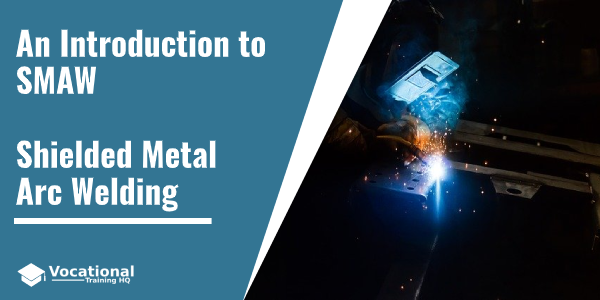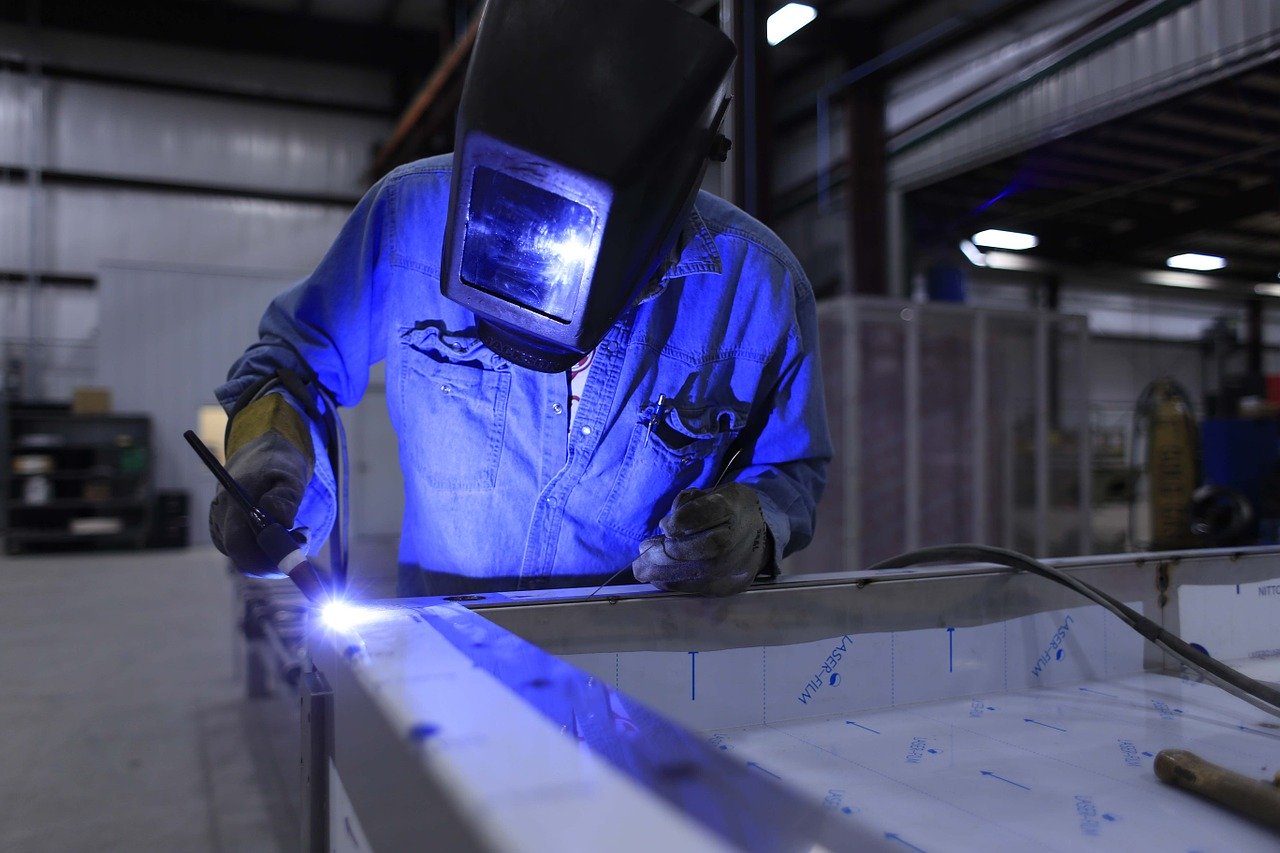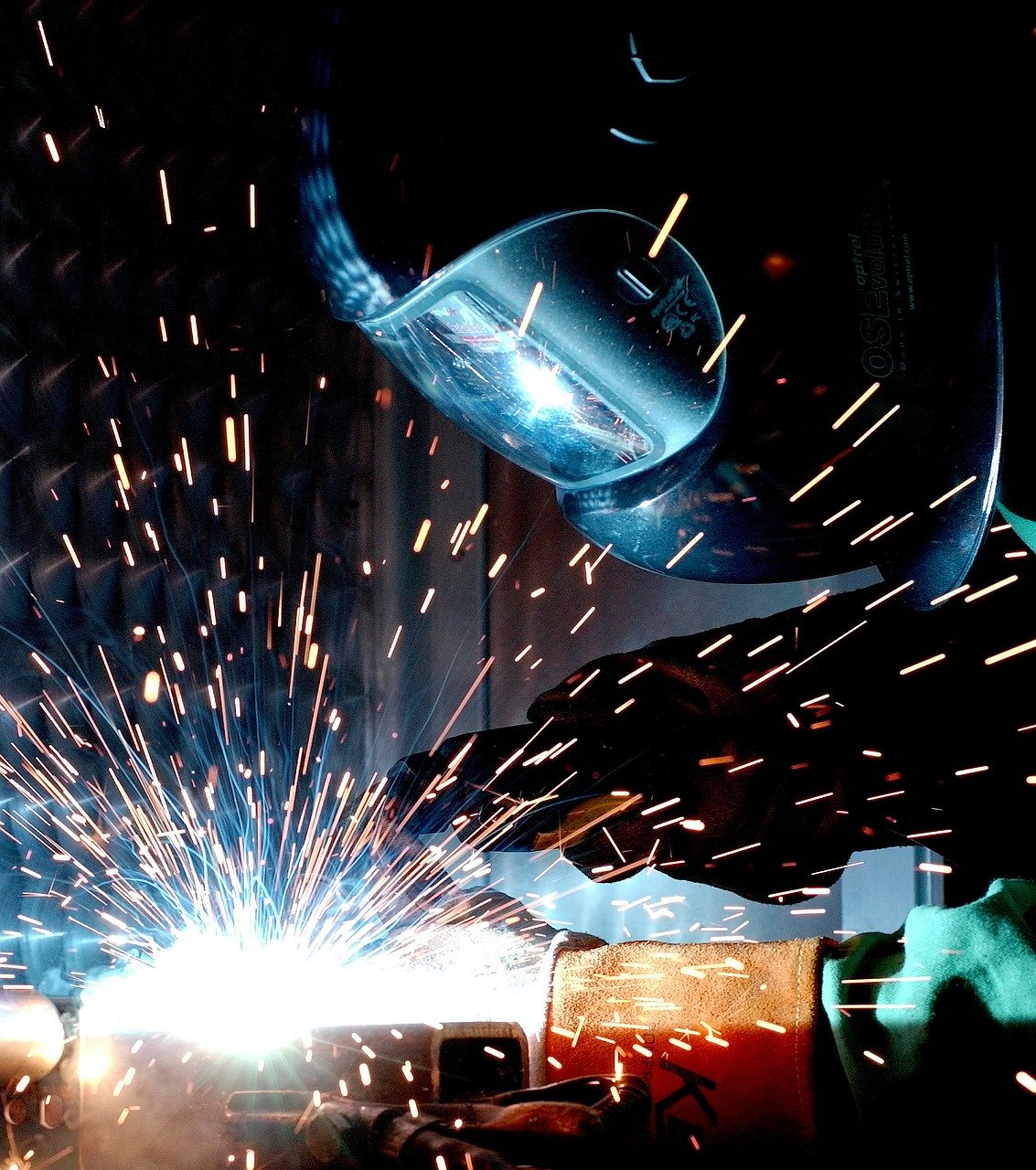If you are considering a welding career, improving your skills in the most common types of welding is a way to get job security for the years to come.
Through a seven-months welder program, you can increase your average annual salary to a higher level than all other careers in the US have.
Below, you will find some information on SMAW, the most used type of welding in the world.
Article Table of Contents
What is the SMAW Welding Process?
Shielded Metal Arc Welding is also known as manual metal arc welding or flux shielded arc welding.
It is a process in which a flux-coated electrode is used to form a weld.
The flux forms a gas when electricity passes through the electrode.
The gas shields the electric arc in the space between the welded metal and electrode, which prevents the contamination caused by atmospheric gasses in the weld.
This is a fairly simple process, which doesn’t require much use of specialized equipment, so it’s rather popular.
SMAW Common Uses and Advantages
In the SMAW process, when electricity passes through the coated electrode tip and comes in contact with the metal, the arc is struck.
Once the electrode is withdrawn, the arc is maintained.
The coating melts under the heat and becomes a shielded gas.
The rest of the metal electrode melts into the weld pool and becomes a part of the weld when the metal solidifies.
The SMAW welding process is one of the most common and oldest processes in arc welding, dating back to the 1890s.
The SMAW welding process is commonly used for:
- Shipbuilding.
- Underwater welding.
- Construction.
- Farm machinery.
- Pipelines.
The SMAW arc welding process has some irrevocable advantages:
- Good for working outdoors.
- Basic, easily portable equipment.
- Can be used on a variety of metals of different thickness.
SMAW Welding Techniques
In the process of welding, a neat and clean weld should be formed.
To make the process easier, you should pick the steel that works well with the technique of SMAW welding.
The steel meeting the AISI-SAE 1015 to 1025 requirements will work well, as it contains silica under 0.1% and sulfur under 0.035%.
If the alloy steel has content above this range, the problems with cracking might arise.
Once you chose the steel to work with, ensure to clean the edges up for a neat weld.
For this, you should remove rust, paint, moisture, oils, and scale.
If the joint can’t be cleaned, you should use an E6010 or E6011 electrode with a slow speed of travel to ensure the gasses are out before the puddle solidifies.
Basic Quality SMAW Welding Tips
There are some quality issues that can arise from SMAW welding, which include:
- Leaving the weld weak due to gas bubbles.
- Porosity caused by gas in the weld that did not escape before the metal solidified.
- Poor fusion from dirty metal or low power.
- Splatter caused by low voltage or high amperage.
- Too low a current or too large an electrode.
- Shallow penetration caused by too fast travel time.
- Cracking.
The latter can be a result of all the above issues as well as the lack of movement in the weld while working or the use of inappropriate metals.
If metals are not quite optimal, you should use slow travel speed to keep the puddle molten and allow the gasses to bubble out to create a strong weld.
If you’re working with thinner stock, between 10-18 gauge, place your piece at a 45-75 degree angle to ensure the fastest travel.
That way you won’t make the joint too wide, otherwise, you risk burning through.
When working with a heavier plate of 3/16″ or more, apply the weld flat for the best electrode placement.
Safety When Welding SMAW
Just like any other tool, welding equipment shouldn’t be feared, but respected.
With any type of arc welding, high voltage and amperage electricity are involved and can be dangerous unless the right precautions are taken.
If the electricity passes through the heart, the burns from the electrical conduction or the heat of the torch can be serious or even life-threatening.
To stay safe while welding, you should wear basic personal protective equipment.
At a minimum, it includes a long-sleeved jacket, heavy leather gloves, and a welding helmet.
UV light that is released during welding can cause retinal burns or permanent eye damage unless the filter in the faceplate of the helmet protects your eyes.
Besides, during the welding process, some gasses can be released that can be harmful, so sufficient ventilation is significant as well.
Read the full guide: How to Become a Certified Welder


